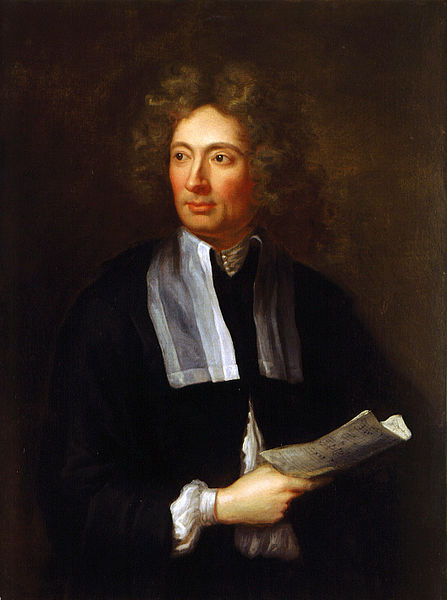Corelli, Concerto in D Major, Op. 6, No. 4
Way back at the beginning of this series, we had a brief discussion of the concerto grosso. We’re talking about Performance Pick 10, a concerto grosso by Handel—218 picks ago. We briefly mentioned Corelli and his importance to the form. The concerto grosso of the Baroque period pitted a small group of instruments against the larger orchestra (in contrast to the solo concerto of the Classical and Romantic periods in which the solo instrument assumed the leading role).
 Arcangelo Corelli (1653-1713) achieved considerable fame and wealth in his lifetime, although he confined his writing to instrumental music and produced a notably small corpus of works. Born in Bologna, he made his career in Rome. Despite his success, contemporary accounts describe him as modest, generous, and unflappable.
Arcangelo Corelli (1653-1713) achieved considerable fame and wealth in his lifetime, although he confined his writing to instrumental music and produced a notably small corpus of works. Born in Bologna, he made his career in Rome. Despite his success, contemporary accounts describe him as modest, generous, and unflappable.
He gained fame also as a violinist and teacher. Corelli is credited with giving the violin its prominent place in the orchestra and raising performance techniques to an exacting level. These advances coincided with the refinement of violin-making by the Stradivari, Guarneri, and Amati families.
Corelli’s influence spread well beyond Italy, and his works were frequently imitated and transformed by succeeding composers across Europe, including Vivaldi, Handel, J.S. Bach, Liszt, and Rachmaninov. Michael Talbot, writing in Groves, notes:
If today Corelli’s idiom often seems predictable, over-simple or even commonplace, it is paradoxically as a result of its very originality as perceived by his contemporaries, who, by appropriating and developing its most advanced features, turned what were once exciting novelties into dry clichés.
Corelli’s writing also marks in some ways the final step in the transition from the modal music of the Renaissance to the Baroque and our modern tonal system. The specifics of that may be interesting only to those of us with a strange fascination for music theory but, for example, harmonic sequences and modulations based on the circle of fifths. The style and harmonic structure is very much what you would expect of Bach or Handel.
Finally, if you follow this series, you will recognize the performing ensemble Voices of Music. Maybe I turn to them too often. When they stop producing so many first-rate recordings on period instruments, I promise to scale back.



